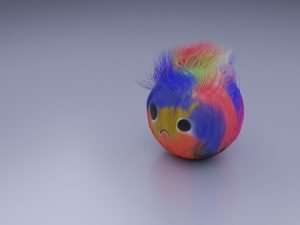How to Draw is a blog about line art drawing and instructional videos. It’s also a place for me to share my process with other artists and students, because I get a lot out of that in return.
The site focuses on people who are interested in improving their drawing skills, regardless of what medium they use or what their level of skill is. You may have tried lots of different things and you may be frustrated. You may have just picked up a pencil for the first time ever. You may just want to learn how to draw in order to improve your skills with another medium.
Tutorials come in 3 sizes: quick tips (less than 5 minutes) quick tips (~10 minutes) and extended videos (15-30 minutes).
The topics cover everything from gesture drawing and facial expressions to comics, manga, sci fi and fantasy illustration, fine art and more!
If you’re interested in learning how to draw please subscribe to the email list so we can stay connected and make sure you don’t miss out on any free content or tutorials.”
\-\-\-\-\-\-\-\-\-\-\-\-\-\-\-\-\-_-
Welcome to the How To Draw web site! Here you will find a collection of drawings and an instructional blog for artists interested in learning how to draw. My name is Henry Fong, but you can call me Fong or Mr. Fong, whatever you like. I am a professional artist working with line art, digital painting, and coloring. I have been drawing since I was five years old and have been teaching others how to draw for over twenty years. I also run the YouTube channel “howtodrawlineart” where I share my knowledge on different drawing topics. I hope that you enjoy my site and find it useful in your artistic endeavors!
Easy Drawing Lessons and How To Draw Articles. The blog features step by step, detailed drawing instructions. In addition to the lessons feature weekly line art drawing challenges and contests.
There are also free video tutorials, that cover many different aspects of drawing and art instruction including: Learn how to draw, how to shade, how to draw faces and figures, perspective, shading techniques and much more!
The site also offers a library of drawings and illustrations created by the author plus a gallery of work by other artists.
Tutorials are available for beginners as well as advanced artists. There is something here for everyone!
Lineart drawing is a very fast way to sketch the general outline of a subject, but it tends to lack detail. This can be used to your advantage when you want to create bold, cartoon-style drawings. The opposite is also true: when you want to convey a lot of detail and information, lineart drawing can appear sketchy or amateurish. To get the best results from your lineart drawings, you’ll need to know some basic rules and tips.
Altering the thickness of your lines is an effective way to add detail to your work. The thicker the line, the more detailed it will appear. When using thick lines, try adding details within the lines that are thinner than they are; this gives them extra definition. You can also use this principle in reverse by using thin lines for details and thicker ones for less important elements.
The weight of your pencil can also affect the appearance of your work. Thicker pencils, like charcoal or pastel, make bolder marks than pencils that you sharpen down to a fine point. This can give your drawings strength and impact if you choose a dark subject matter and thick strokes. When working with lighter colors or finely detailed sketches, however, soft pencils may give you more control over how fine
So you finally made the decision to start drawing? That is a great step towards becoming an artist, and I am sure that you will find this site very useful.
I will try to make this site as good as possible, and add new drawing tutorials as often as I can. There are many sites on the internet which give instructions on how to draw, but most of them are just showing some sort of finished product and not really giving instructions at all.
What makes this site different is that I try to show every single step in creating a drawing, so you can see what you need to do in order to reproduce it. This way you learn how to draw by doing it, instead of just copying someone else’s work.
Tutorials are listed from newest to oldest or from easiest to hardest, depending on how you look at it.*
Through the years I have tried a lot of different media but have finally settled on a technique that works for me. My work is rendered with small round and flat watercolor brushes on Yupo paper.
I was first introduced to this paper at an open house at my sons school. I liked it immediately because it was not like any other paper I had used before. The smooth surface made it very easy to draw on and yet it still had some tooth to it, so it would hold up to watercolors. Also, unlike watercolor papers, Yupo holds pencil really well.
Rather than trying to paint or draw on the paper with color I decided to work with black ink first so that I could see how light would react on the surface before committing myself to using color. I also loved that I could erase and start over if needed without having to worry about erasing through the paint layer….


